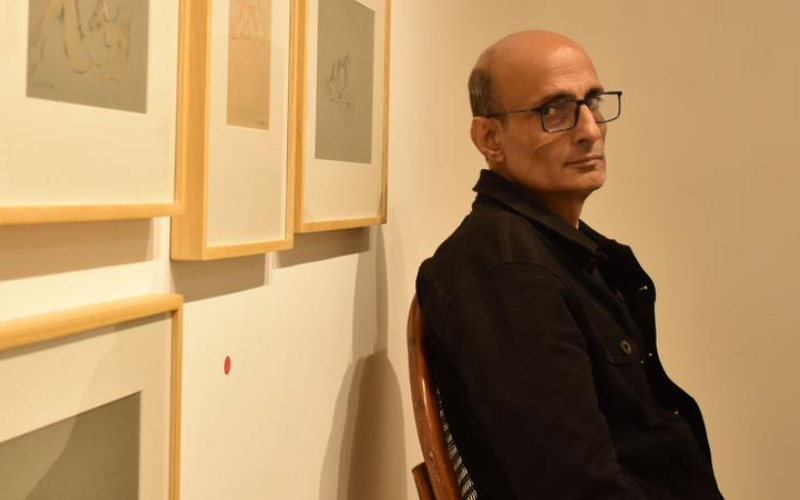When Neeraj Bakshi first watched Out of Africa, he didn’t realise the film had just primed the canvas of his life. He was only seven, growing up in Kashmir.
More than four decades later, Bakshi, now an acclaimed Indian painter, would capture the feline grace of lions, the mysticism of acacia-silhouetted savannahs, and the cultural rhythms of the Maasai in watercolours, collages, and abstract forms. Each piece is infused with a deep reverence for Kenya and the wilderness that transformed his worldview.
“Kenya and Africa were a turning point in my life,” he says.
For over 20 years, Africa has lived in his brush. His paintings, often subtle and abstract, echo the movement of elephants, the elegance of big cats, and the timeless dance between man and nature.
In 1998, as a young artist fresh off a prestigious INLEX scholarship, Bakshi made an unconventional choice. Offered a two-year scholarship to the Royal College of Art in London, he turned it down.
“I told them I want to go to Masai Mara and study African art as a first-hand experience. I wanted to meet the people, to see the wildlife, and experience their culture,” he recalls.
He spent three months in the Maasai Mara and another in Nairobi, sketching lions and leopards, collecting artefacts, and absorbing the region’s rich textures. The landscapes, the great wildebeest migration, and the cultural depth of the Maasai overwhelmed him.
“It was one of the most enchanting experiences of my life. It was a dream come true. I saw the fury and the bounty of nature at the same time,” he says.
“It was a game-changer. It was like a pilgrimage. The landscape was mystical. I used to draw and paint landscapes, but then I was engulfed by African art, the wildlife, and the scenery,” he adds, noting that the experience reshaped not only his artistic style but his entire philosophy of life.
From that transformative journey came Africa Impressions, his first solo exhibition in New Delhi, dedicated to Kenyan wildlife and culture. His affection for the wild breathes life into his canvases, where lions, zebras, leopards, giraffes, elephants, and rhinos find a place in Indian homes and galleries.
His work blends animal studies with Maasai artefacts, everyday utensils, and imagined conversations between humans and animals.
“It was one of the greatest galleries in Delhi’s art scene. I believe there’s a place for wildlife conservation in art, and artists can be great ambassadors,” he says.
He likens his artistic mission to that of Hemingway and Joy Adamson—storytellers who made the world care about Africa, not just observe it.
Yet beneath the beauty, Bakshi’s brush also explores darker themes: habitat loss, poaching, and the greed destroying the wild. He describes this as “the fury behind the foliage.”
His artwork subtly reveals greed as the root cause of environmental degradation. Whether it’s land grabbing, the illegal ivory trade, or deforestation, his work exposes patterns of exploitation that threaten both animals and humans.
“When we destroy forests, animals suffer first. But the real tragedy is ours—climate change, drought, suffering. Wildlife loss is not isolated. It’s a global loss,” he warns.
“When we cut forests and grab land, it’s not only animals that are affected. The greatest loss is to humankind because of global warming,” he adds.
“It affects all of mankind, and if the trend continues, the consequences could be disastrous for us and future generations.”
Beyond wildlife, Bakshi is also concerned about the plight of African artisans. Despite global admiration for African art, he says it remains undervalued financially and institutionally.
“It’s not about whether people appreciate it—they do. But how much are they willing to pay for it? That’s the real question,” he says, pointing to a broader neglect of artistic labour.
To give back, Bakshi has pledged to channel 15 per cent of his art sales toward wildlife conservation, partnering with organisations focused on preserving the environment. A follow-up exhibition, Africa Impressions II, is set to be held in both India and Nairobi.


